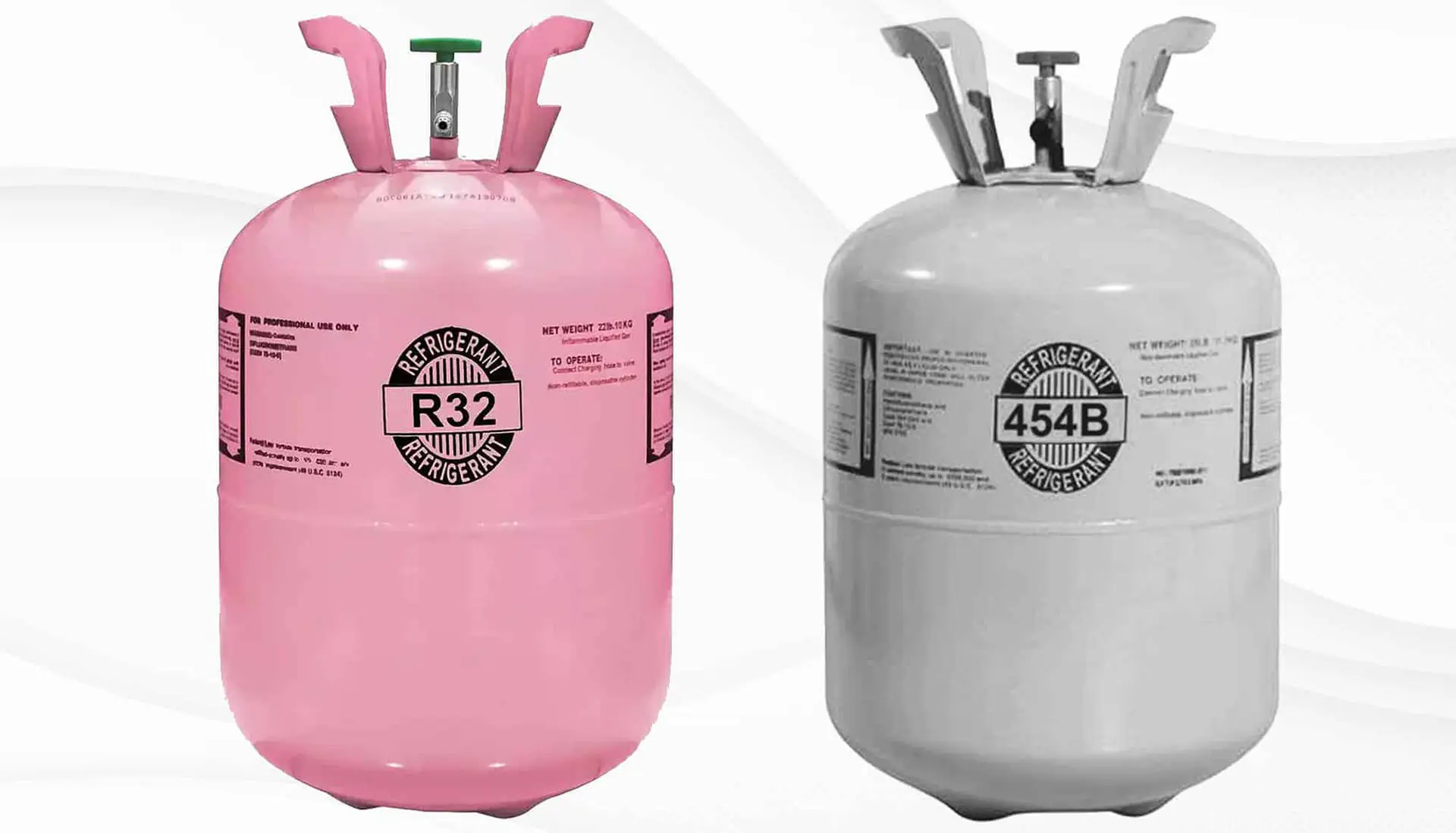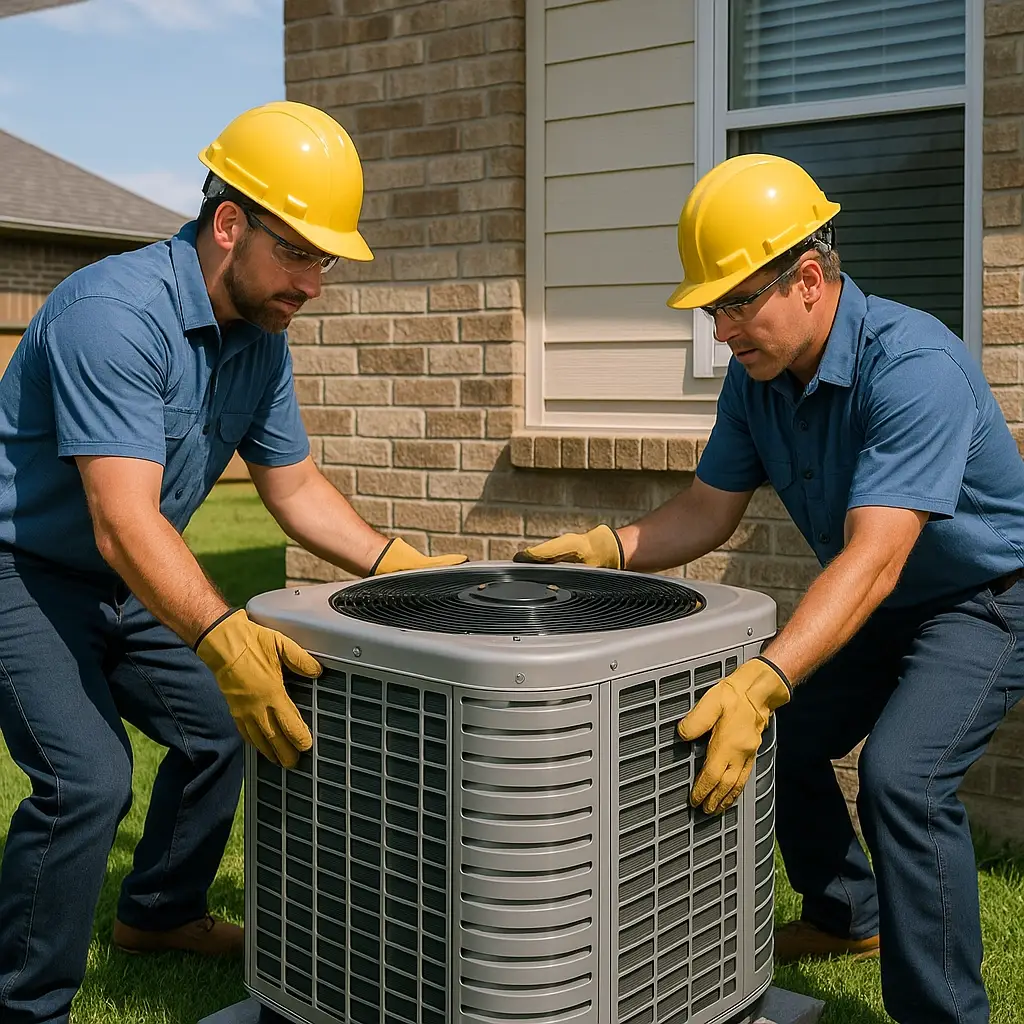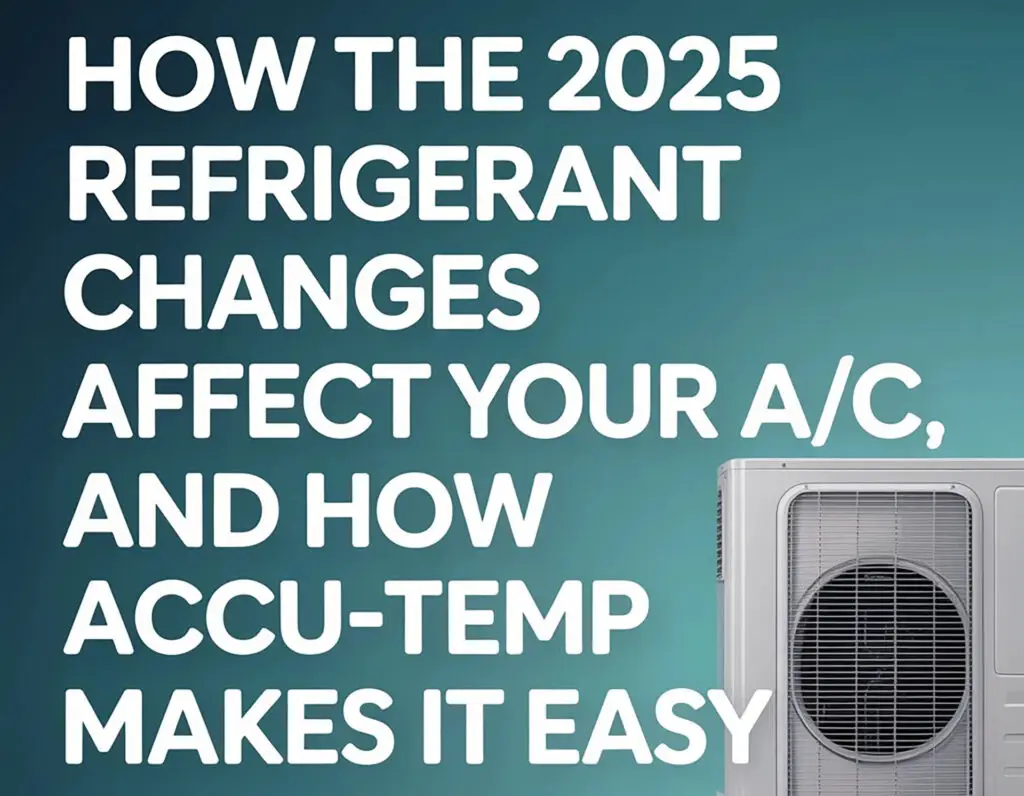Big Changes Ahead: The HVAC Industry’s Turning Point
If you’re a homeowner or property manager in Central Texas, there’s a big HVAC change you’ll want to know about. Starting January 1, 2025, federal laws require all new air conditioners to use a whole new kind of refrigerant—one that’s better for the environment but comes with some changes you’ll want to understand.
Let’s break down what’s happening, why, and what it means for your home, comfort, and wallet (don’t worry—we’ll keep it simple).
What’s Changing (and Why Should You Care?)
The EPA is Phasing Out R-410A
For the past two decades, most home A/C systems have run on a refrigerant called R-410A. It’s efficient, does the job, and is pretty familiar to most HVAC pros. But it’s got one major downside: it has a Global Warming Potential (GWP) of 2,088. In other words, if it leaks into the atmosphere, it packs a huge punch as a greenhouse gas.
So, the EPA—backed by the American Innovation and Manufacturing Act—decided it’s time for a change.
What’s the new rule?
Starting in 2025, all newly manufactured air conditioning systems in the U.S. must use refrigerants with a GWP of 700 or less.
Translation:
No more R-410A in new equipment. It’s being replaced by “A2L” refrigerants that are far less damaging to the planet.

Meet the New Refrigerants: R-32 & R-454B
What Are A2L Refrigerants?
You’ll hear pros talk about “A2L refrigerants.” That’s code for “mildly flammable, low-global-warming” refrigerants. The heavy hitters for new residential units will be:
- R-32: GWP of about 675—much, much lower than R-410A. Also more energy-efficient and requires less refrigerant to do the same job.
- R-454B: GWP of about 466. Even milder for the environment, but works a lot like R-410A, so transitioning is a bit easier for manufacturers. Most manufacturers have adopted R-454B refrigerant.
Both are designed to help us shrink our carbon footprint and reduce the chance of nasty climate side effects.
What Does “Mildly Flammable” Actually Mean?
Okay, so “A2L” does mean mildly flammable—but don’t let that phrase freak you out.
- You won’t be at risk of fire if your A/C is installed correctly.
- Manufacturers are building in new safety mechanisms to handle these refrigerants.
- Technicians (like the folks at Accu-Temp) are getting updated training and safety gear.
- Building and installation codes are evolving to make sure everything stays safe for homeowners.
In everyday use, you’re very unlikely to notice any difference.

What About My Current A/C System?
If your existing air conditioner uses R-410A and is running fine, you can keep using it. There’s no requirement to swap it out right away. Here’s what you should know:
- Servicing: Repairs and maintenance for R-410A units will continue as usual. Supplies of R-410A for servicing existing systems will be around for years.
- Replacement: When it’s time for a new system—either because yours is dying or you want to upgrade—your options will be limited to the new A2L refrigerants starting in 2025.
- Parts: As R-410A systems become less common, replacement parts may get harder to find and more expensive.What Does “Mildly Flammable” Actually Mean?
Okay, so “A2L” does mean mildly flammable—but don’t let that phrase freak you out.
- You won’t be at risk of fire if your A/C is installed correctly.
- Manufacturers are building in new safety mechanisms to handle these refrigerants.
- Technicians (like the folks at Accu-Temp) are getting updated training and safety gear.
- Building and installation codes are evolving to make sure everything stays safe for homeowners.
In everyday use, you’re very unlikely to notice any difference.
Pro Tip:
If your A/C is on its last legs, replacing it might save you some dollars and simplify things—ask us if it’s time for an upgrade!
Will the New Systems Cost More?
Yes, upfront. But there’s a bigger picture.
- Price Increase: Industry projections estimate new A/C units will cost 20–25% more starting in 2025. This is because of new technology, higher efficiency standards, and the cost of manufacturing for new refrigerants.
- Energy Savings: A2L refrigerants like R-454B are more efficient. Over time, you could see lower monthly cooling bills.
- Eco-Friendly Credits: Better energy performance means some systems may qualify for rebates or tax credits, depending on availability and state/local programs.
What if I Need a Repair?
If you have a R-410A system, no need to panic:
- Repair parts and refrigerant will still be available for years, but prices could creep up as supplies dwindle.
- Major repairs on an older R-410A unit might not be worth the investment in a year or two—another reason to weigh replacement options if your system is getting up there in age.
- Accu-Temp’s technicians are fully equipped and trained for both legacy and new-generation systems, so you’ll get expert service either way.
How Accu-Temp Makes This Easy on You
At Accu-Temp Air Conditioning & Heating, our job is to keep your home cool—without the hassle. Here’s how we’ll guide you through these refrigerant changes:
- We’re Ahead of the Curve: Our techs already have specialized training in the latest A2L systems and safety codes.
- Honest Advice: Not sure if you should repair or replace? We’ll look at your unique situation—budget, equipment age, energy bills—and give you a straight answer, not a sales pitch.
- Options for Every Home: We install a range of new, EPA-compliant models featuring R-454B and R-32. Our goal is a seamless switch-over, so you don’t lose out on comfort or value.
- Local Know-How: Central Texas summers are no joke. We install and maintain equipment proven to handle the heat, humidity, and utility demands in our region.
Your Takeaways & Next Steps
- R-410A is Out—A2L is In: Expect all new systems to use R-32 or R-454B from 2025 on.
- Plan Replacements Thoughtfully: If your AC is aging or needing big repairs, you might save by upgrading before prices jump.
- No Rush for Working Units: If your current system works, no stress—you can still get service for years.
- Work with Pros: Safe installation of these new refrigerants takes training and updated tools. Always hire a licensed HVAC contractor.
- Better for the Planet: The new refrigerants are a win for the environment and, potentially, your energy bill.
Have more questions? Need a quote or a consultation? Our friendly team at Accu-Temp is here to keep the transition smooth and your home cool, all summer long.
Ready to talk through your system’s options? Visit us at Accu-Temp Air Conditioning & Heating or give us a call. We’re here to help you stay ahead of the Texas heat—no matter what changes the industry throws our way!

